#sunburst 1960
Explore tagged Tumblr posts
Text

R.l.P. John Mayall. British Blues Pioneer.🫡
This is a public service announcement… …. …. …with guitars… specifically a Sunburst 1960 Gibson Les Paul!
#bluesbreakers#Decca#John Mayall#eric clapton#john mcvie#hughie flint#gibson les paul#sunburst 1960#marshall amps#Beano cover
2 notes
·
View notes
Text
the young veins' instruments
note: please correct me if any of these are wrong! i unfortunately know almost nothing about guitars but i just think it's interesting/sweet to see how the 60s influences and inspirations extend to the guitars the young veins chose. i also like how it seems that ryan gave jon a couple of his old guitars!
Ryan
Epiphone "John Lennon Revolution" Casino Electric Guitar: John Lennon's guitar of choice during the later years of the Beatles. The model Ryan plays here was sold as a limited edition reproduction of Lennon's guitar (I think in 2009).

Jon
Fender Custom Shop Stratocaster NOS in Sunburst: Fender Stratocasters were hugely popular during the 1960s and have a very distinctive retro look. Jon's custom Stratocaster here looks very visually similar to a model played by George Harrison. The museum picture is from an exhibition at the National Music Museum in Bologna, Italy, where Sunburst Fender Stratocasters owned by Harrison were displayed.

Fender American Stratocaster in Surf Green: another classically 1960s model and the same guitar Ryan was playing during much of the Pretty Odd era. Possibly Jon borrowed it from him?

Rickenbacker 360 Electric Guitar in Jetglo: Rickenbacker guitars were used by many 1960s/70s stars, but most notably by John Lennon. Ryan also played a black Rickenbacker during the Pretty Odd era, which again he may have given to Jon for the Young Veins.

Rickenbacker 360 Electric Guitar in Fireglo: Jon also played an orange/red Rickenbacker that looks similar to those played by Carl Wilson (of the Beach Boys) and George Harrison.

Andy Soukal
Custom Höfner bass: a model of bass most famously played by Paul McCartney.

Nick Murray
1968 Ludwig drum set in White Marine Pearl: a make of drums very heavily associated with Ringo Starr, who had a black oyster pearl set.

Nick White
Korg Stage Vintage 1 Keyboard: an electric keyboard designed to look and sound authentically retro.

25 notes
·
View notes
Text
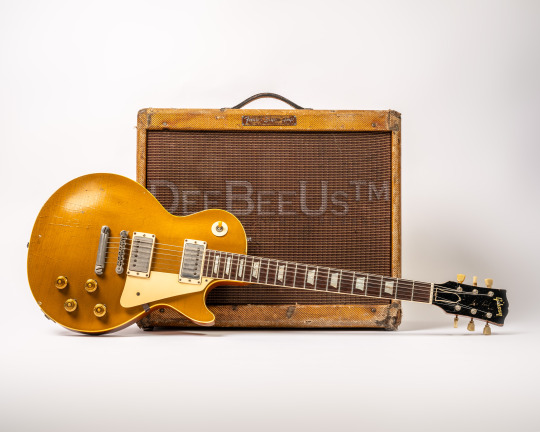
1957 #Gibson#LesPaul Standard. Photographed at the @dlott65 / @chriswstringer8#UnionSound23 Summer Shindig last weekend.
In his book "Gibson Electrics The Classic Years" (pp 218), Andre Duchossoir says that 598 #LesPaulStandard models were shipped in 1957, which makes a #GoldTop with twin PAFs pretty darn rare, as Gibson switched to the "sunburst" finish the next year. In total ~1700 'Bursts were shipped between 1958 and 1960, so there's a plethora of them out there (compared to '57 Gold Tops, I mean!).
Looking at individual years, there were 434 LPs shipped in 1958, the lowest number of Les Pauls shipped in any year between 1952 and 1960, so technically that makes the '58 'Burst the rarest of all the LP Standards, but the Gold Top is the rarest of all the finishes on a PAF-equipped LP, when you take the total number of 'Bursts shipped as a whole. I guess I am trying to say you have a much better chance of seeing a real 'Burst in your lifetime than you do of seeing '57 Gold Top! 😉
I am lucky enough to have two friends that own a '57 Gold Top, and it's always a privilege to be in the same room with either one of those guitars!
#guitar#guitars#guitarphotography#fender#gibson#vintageguitars#toronto#electricguitar#vintagegear#les paul#gibson les paul#les paul standard#goldtop#paf pickups
70 notes
·
View notes
Text
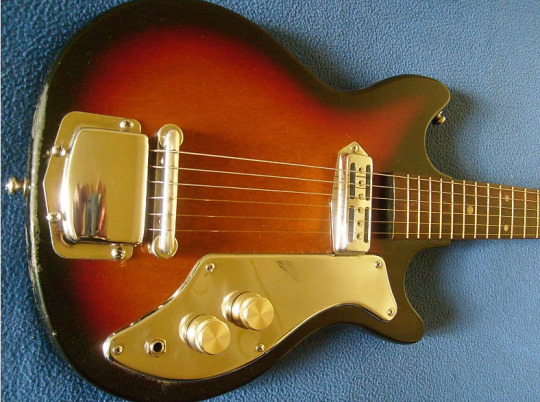
Japan 1960 Sunburst Teisco
41 notes
·
View notes
Text











Vintage Jadeite I W Rice Vertical Ribbed Sided Perfume Bottle ebay shawal-7
Vintage 1960’s Hollywood Regency Glass Perfume Bottle w Filigree Rose Accents ebay ajlambe12
Vintage Made in France Purple Glass Perfume Bottle With Lid Collectible ebay stampinsisters
Perfume Bottle VTG Deep Purple Round Cut To Clear ebay ma_vintage_finds
Vintage 1930's Glass Perfume Bottle With Stopper By Imperial Glass, 8x4 ebay epicf_62
Beautiful Art Deco Past Times Sunburst Perfume Bottle With Original Box Vintage ebay mcker-rya
Elegant Czech Cut Glass Crystal Perfume Bottle Vintage 6 Heart Feather Textured ebay crfer5983
Czech Cut Crystal Footed Perfume Bottle Lady Flowers Pink Clear 8 Tall Vintage ebay sellit.ca025
antique filigree hand cut Czech crystal glass perfume bottle ebay geo10
Vintage IRICE Blue Glass Perfume Bottle Jeweled Top Crystal Vanity ebay summerchild198
Art Deco Irving W Rice Czech Yellow Cut Glass Perfume Bottle 7 Antique ebay lizandean
11 notes
·
View notes
Text
Discover Jimmy Page
A complete list of his most famous electric guitars - pt. 1
from pageysartgallery
1959 Fender ‘Dragon’ Telecaster - restored in 2007
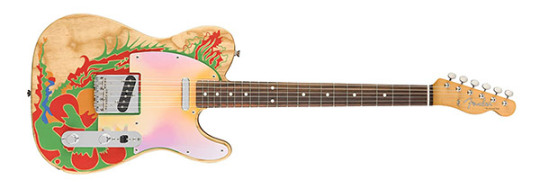
Finish: Custom yellow with dragon painting, it was originally white
Years used: 1966 to early 1970s, only the body is left of it
When Jeff Beck was recommended by Page to join the Yardbirds in 1965, Beck gave him this 1959 Fender Telecaster, which originally had a white finish. In 1967, Page decided to add eight circular mirrors to the body, completely changing the instrument’s visual identity. Eventually, he removed the mirrors and completely repainted the guitar in a yellow-ish color, and added the now-famous dragon painting.
This was the main Zeppelin guitar, live and in the studio from from 1968 to April 1969. It was also used on the solo for “Stairway To Heaven” in the studio.
Unfortunately, when Page got back from Zeppelin’s American tour, he found out that one of his friends had repainted it. Although intended as an act of kindness, his friend practically ruined the guitar and its wiring. Page disassembled the poor instrument and used some of its parts on other guitars. The body is reportedly still in his possession, but he refuses to share pictures of it with the public.
“The whole idea was to put an extra life into the guitar. The whole of the Dragon artwork it starts off – I don’t do a sort of a pre-run of it. I wanted to use sort of poster paint which was used in the production of those psychedelic posters.”
— Jimmy Page (x)
1961 Danelectro Shorthorn - a bit of a mongrel, made from the best bits of two Dano's

Finish: Black with a white pickguard
Years used: Mid-1960s to now
Danelectro guitars used to have major success back in the 1960s. Formed in 1947, the company operated independently until 1966 when it was sold to the Music Corporation of America. Unfortunately, the brand went under in 1969, only to be resurrected in the late 1990s.
In his vast arsenal of guitars, Jimmy Page still has his old Danelectro Shorthorn model, also known under designated names 3021 and 59DC. This particular instrument, featuring two “lipstick” single-coil pickups, was manufactured back in 1961 and Page bought it in the mid-1960s. The story goes that he first used it on stage with the Yardbirds. Occasionally, the guitar found its use with Led Zeppelin. The guitar is often associated with “Kashmir” as it was used for the song many times during Led Zeppelin’s shows.
It is a very simple instrument with a hardtail bridge, a 3-way switch for its two pickups, master volume control, master tone control, and a pretty-looking white pickguard covering most of the treble side of the body. And, what many guitar lovers don’t know, Danelectro Shorthorn actually features a semi-hollow body.
1959 Gibson Les Paul Standard - The ‘Number One’. The most iconic and still Jimmy’s favourite and most used Zep guitar. Noticeable lack of flame finish.

Finish: Sunburst
Years used: 1969 to now
This is a Gibson Les Paul Standard model built back in 1959 or early 1960. These instruments are popularly known as “Holy Grail” guitars and can reach some mind-boggling prices among avid collectors. This particular one found its way into Jimmy’s collection in 1969 when Joe Walsh, who later became a member of the Eagles, gave it to him as a gift. As Walsh explained many years later, he just thought that Jimmy needed a nice Les Paul in his collection, since it fits Zeppelin’s music.
The instrument saw some modifications before it came into Page’s possession. One of the main changes was the neck, which was sanded, thus making it significantly thinner. Jimmy did some of his own changes by adding gold-plated Grover tuning machines, as well as changing its pickups multiple times. The pickup that saw the most action on it in the 1970s was T-Top humbucker. This one was eventually swapped in the 1990s for a modified Seymour Duncan, and Page even added a “push-pull” potentiometer to it for the reverse phase mode of operation. The guitar still remains his “Number One” to this day.
“As soon as I played the Les Paul I fell in love. Not that the Tele isn’t user friendly, but the Les Paul was gorgeous and easy to play. It just seemed like a good touring guitar. It’s more of a fight with the Telecaster but there are rewards.”
— Jimmy Page
Custom-Made Gibson EDS-1275

Finish: Cherry red
Years used: Most of the 1970s, it’s most likely still in his possession
When you think of Led Zeppelin and the 1970s, it’s almost impossible not to picture Jimmy Page with his legendary double-neck guitar. This is mostly due to the fact that he used it for “Stairway to Heaven” during live shows.
Gibson’s EDS-1275 is one of the most innovative guitar models. Entering production in 1963, it is believed that this was the first-ever double-neck solid-body electric guitar. Featuring one conventional 6-string neck and another 12-string neck, all with a double set of pickups, it allowed guitar players to create more tones with a single instrument.
Page asked Gibson to make him one in 1971, although EDS-1275 was not in production anymore at that point. Nonetheless, they agreed and made a special one for him, which featured a modified body shape compared to the original commercially available model. It’s not completely certain, but it’s quite possible that Jimmy Page popularized the instrument so much that Gibson eventually started making them again throughout the 1970s and later decades.
“We recorded Stairway to Heaven, and there was like a guitar army on it – as they used to tease me. Because of that, it needed more texture than just one guitar. The double-neck seemed like a perfect compromise.”
— Jimmy Page (x)
1960 Gibson Les Paul Custom ‘Black Beauty’ - Jimmy's main session guitar, used at Royal Albert Hall in 1970 and a few other early gigs. Stolen in 1970, recovered 2018.
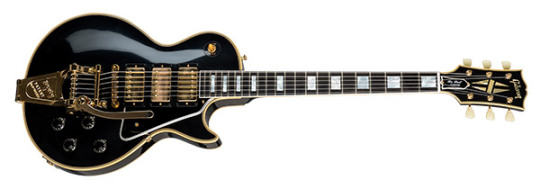
Finish: Black with golden hardware
Years used: Early 1960s to 1970
Things really took a different turn when Jimmy Page switched over to Les Paul guitars full-time, which eventually became his go-to guitar model. However, he actually got his hands on one way before Led Zeppelin’s formation, sometime in the early 1960s. Nicknamed “Black Beauty,” this was a black Gibson Les Paul Custom, most likely manufactured back in 1960. Some sources claim that he traded his Gretsch Chet Atkins signature model for it.
Jimmy used “Black Beauty” as the main guitar for his session work. Of course, the instrument found its way on early Led Zeppelin records. Being a Les Paul Custom model, it featured some significantly improved aesthetic traits. This includes 3-ply binding, golden hardware, black pickguard, the easily-recognizable pearl logo on the headstock, and pearl inlays on the fretboard. Additionally, the guitar came with a Bigsby tremolo bridge and tailpiece, as well as three humbuckers.
Jimmy Page was scared to take it on the road with him. And when he finally did go overseas to the United States, his precious “Black Beauty” got stolen. Its whereabouts were a mystery for decades until the instrument was finally retrieved in 2015. It still remains one of the most iconic guitars in history.
“Black Beauty, which got nicked in the States; it disappeared in an airport, somewhere between Boston and Montreal. A lot of my studio work had been done with that guitar. I didn’t want to take it out of the house. Funny that once I did take it out, it got nicked!”
— Jimmy Page, Guitar World, 1991
1959 Gibson Les Paul Standard - ‘Number Two’ bought as a backup in 1973, slightly darker sunburst than the #1. It's a bit meatier and louder than the #1 according to Jimmy's guitar tech.
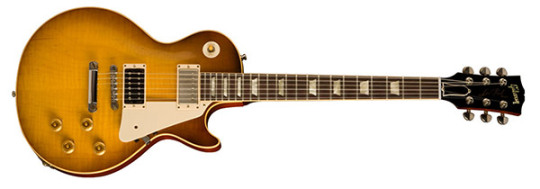
Finish: Sunburst
Years used: 1973 to now
Jimmy fell so much in love with his Gibson Les Paul Standard that he got ahold of another “Holy Grail” in the early 1970s as a backup option, popularly known as the “Number Two.” In order to make it feel and sound exactly the same as the “Number One,” he did some significant modifications to it, including the neck sanding and the addition of Grover tuning machines. But although it looks pretty similar to the “Number One,” this Les Paul Standard has a slightly darker shade, making it look browner.
Compared to the main Les Paul, this one had more modifications done to its electronics. All four of its potentiometers were swapped for “push-pull” ones and there are even some additional switches. As a result, Jimmy was able not only to do phase reverse but also coil-splitting and coil-tapping, allowing for an abundance of sonic options.
“I customized my number two Les Paul, which again is a real old vintage one. However, that gave any combination of all of these (pickups). But, it was a little fussy, because all of the knobs were push/pull, and I had little switches (below the pickguard).
Reality of it was – the thing that I found most important to me was the fact that you could reverse the phase on this. By reversing the phase you get a close approximation to the sound Peter Green would get.”
— Jimmy Page (x)
1969 Les Paul Deluxe - ‘Number Three’, metallic purple red, as seen on “Whole Lotta Love” on TSRTS

Finish: Red
Years used: From 1970 or 1969
Page’s love for Les Paul guitars has always been immense. So it’s no wonder that he also had his “Number Three,” which is a Gibson Les Paul Deluxe model. However, not much is known about the instrument, and some believe that this was a Les Paul Standard. But what makes it interesting is, that besides being traditionally a “third” one, he actually got the guitar before the second Les Paul Standard.
The “Number Three” was used sporadically throughout the 1970s, mostly between ’73 and ’75. Towards the mid-80s, Jimmy installed a B-Bender in it and started using the guitar again more extensively. Most recently, he used it on “Over Now” from the 1993 release Coverdale / Page.
“Probably my favorite effect was the one used on “Over Now.” After David sings, “I release the dogs of war,” you hear this growl. I produced that by running my purple B-Bender Les Paul through an early-sixties Vox wah, a DigiTech Whammy Pedal set “deep,” an old Octavia, and one of my old one-hundred-watt Marshall Super Leads, which I used with Zeppelin.”
— Jimmy Page, ‘Light and Shade: Conversations with Jimmy Page’
1964 Fender Stratocaster - Used at Earls Court in 1975 for one night only on “No Quarter” plus on “For Your Life” from Presence and on ITTOD. Also used at Knebworth in 1979 and '80 tour on “In The Evening”
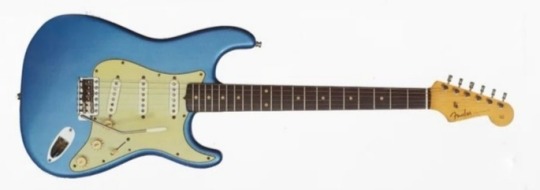
Finish: Lake placid blue
Years used: Second half of the 1970s and 1980s
A 1964 Fender Stratocaster model, painted in a very aesthetically pleasing shade of blue (referred to as “lake placid blue”) and featuring a classic white electronics cover. While most of the features on this model are what you’d expect from a Fender Strat, these 1960s models featured rosewood fretboards instead of “conventional” maple ones.
The story goes that Page bought it back in 1975 and that it was used on Zeppelin’s “Presence” album for a few songs, although this has not been confirmed. Page claimed that the instrument was used since 1978, and there’s also a theory that he implemented it on the 1979 album “In Through the Out Door.”
1950s Futurama/Grazioso
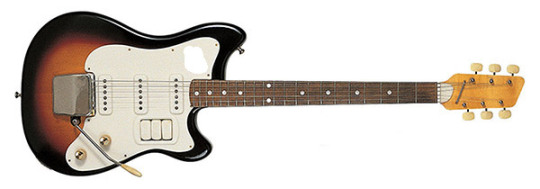
Finish: Sunburst
Years used: Late 1950s to the mid-1960s
These guitars were made in Czechoslovakia by a company called Drevokov. Originally called Grazioso for their domestic market, they had their name changed to Futurama for foreign markets. These came with three single-coil pickups, tremolo bridge (a type that you don’t see on any other known guitars), sunburst finish, and a body that somewhat resembles Fender’s Jazzmaster. It featured many other unconventional traits, including individual on-off pickup switches that eerily resemble old light switches.
Page used this one at the very beginning of his guitar-playing career. It’s not exactly certain when it stopped being a part of his inventory, nor where it’s currently at, but it’s assumed that this Futurama saw some action during Page’s time as a session guitar player in the first half of the 1960s.
“See, that’s the first electric guitar I get. The one before it, the Höfner, my dad buys that, but after that, [he laughs]—I don’t know, maybe he was psychic and he knew what was coming, because there’s a whole procession of guitars that come into my life over the next few years. But that’s the first one, the Grazioso. It looked and felt like an electric guitar, even though it wasn’t a Fender.”
— Jimmy Page (x)
1965 Fender Electric XII
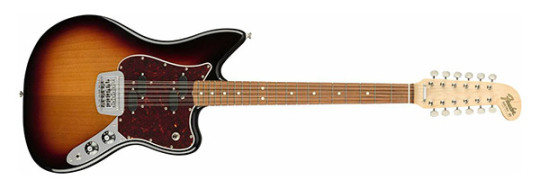
Finish: Sunburst
Years used: Early 1970s and it’s most likely still in his possession
Before the Gibson EDS-1275, Jimmy had another 12-string guitar, Fender’s old Electric XII. This particular instrument was manufactured sometime in 1965. It was used in the studio, most popularly for the recording of “Stairway to Heaven.” However, producer Andy John who worked with Zeppelin on their legendary fourth record claims that it was actually a Rickenbacker 12-string that was included in the song. It’s still one of the main mysteries, even to this point.
Fender’s Electric XII is easily recognizable for its weird “hockey stick” headstock. It also has two split-coil pickups, which is another very unconventional trait for electric guitars as you mostly see these kinds of pickups on basses.
“I used a Fender 12-string in the studio. And before the Fender, I used a Vox 12-string. You can hear the Vox on things like “Thank You”, and “Living Loving Maid”. On “Stairway” I used both my Vox Phantom that I used on “Thank You” and my Fender Electric XII. They both sort’ve sounded the same. It was more about how they played. They felt different. On “The Song Remains The Same”, it’s just the Fender.”
— Jimmy Page (x)
sources: (x) (x) (x) (x)
Featured in the next part: the 1953 brown Fender Telecaster, the 1967 Vox Phantom XII, the 2nd no3 Gibson Les Paul Standard, the Gibson Les Paul TransPerformance, the Gretsch Country Gentleman and the Fender Telecaster with its regular white finish and circular mirrors glued to the body
#jimmy page#pageysartgallery#led zeppelin#the firm#the yardbirds#robert plant#john bonham#john paul jones#paul rodgers#60s#70s#80s#classic rock#classic rock fandom#rock n roll#hard rock#blues rock#rock music#jeff beck#discover jp#guitars#guitar#guitarist#gibson#fender#telecaster#stratocaster#danelectro#by dee dee 🌺🕯️
69 notes
·
View notes
Photo

Just arrived a 1965 Candy Apple Red Fender Jazzmaster in its original black tolex hard shell case! - Link in our profile. - This well-worn but super cool "Genuine relic" Custom Color Jazzmaster dates to the early-CBS period at Fender. It shows a decent amount of honest play wear and some minor alteration but remains a great sounding and substantially original instrument. The guitar is finished in Candy Apple Red lacquer on the body with a matching headstock face. This was one of the most popular custom color options Fender offered as an extra-cost alternative to the standard Sunburst, a classic 1960's Fender look. The Jazzmaster was a popular instrument at this time, having been introduced in late 1958; still even the more common Custom Colors are far rarer than Sunburst examples. - (at Retrofret Vintage Guitars) https://www.instagram.com/p/CmxRQe0uD9S/?igshid=NGJjMDIxMWI=
38 notes
·
View notes
Text
フェンダー編第396回:「~Winter 2022 CS Event Limited #104~ LIMITED EDITION 1960 Stratocaster Journeyman Relic -Faded/Aged 3 Color Sunburst-ってこんなこと」

2022年9月に行われた、「Winter 2022 Online Custom Shop Event」オンライン選定会にて限定受注された逸品!! カタログ外モデルの特別な1960ストラトキャスターが入荷しました!!

Spec. Body : Selected Light-Weight Alder 2PC Body Finish : Nitrocellulose Lacquer , Journeyman Relic Neck : QTR-Sawn Maple , 60 Style C-Shape Neck Finish : Nitrocellulose Lacquer , Heavy Relic Fingerboard: Slab-Laminated Rosewood , 9.5" Radius , 6100 Jumbo Frets , 21F Pickups : Custom Shop Hand-Wound Texas Special STRAT PU Controls : STRAT 1/2 Blender Wiring -Vol / Master Tone / Blender- , 5way-SW Weight : 3.56kg Case : Custom Shop Logo Brown Tolex Hard Case


サウンドの要となるピックアップには、カスタムショップ製ハンドワウンドの「Texas Special STRAT PU」を搭載し、 鈴鳴りのする音抜けの良いクリーン・トーンから力強くファットなドライブ・サウンドまで幅広くアウトプットしてくれると共に、 セレクター・スイッチのリア・ポジションにネック・ピックアップをブレンド出来る「STRAT 1/2 BLENDER WIRING」を採用することで、 「リア+フロント」、「リア+センター+フロント」の2通りの音色が追加され、通常の5ポジションに加えて7通りの音色を出力することが可能です!! リアルな雰囲気の「フェイデッド/エイジド・3カラー・サンバースト」が格好良い、 選定会イベントの為に企画された特別な逸品を、ぜひこの機会にご検討下さい!!
GUITAR PLANET 2023
吉岡 哲志
https://www.guitarplanet.co.jp/
3 notes
·
View notes
Text
So he offered to loan Gallagher one of his guitars: a sunburst 1960s Gibson Les Paul and formerly owned by The Who’s Pete Townshend. The budding Oasis man accepted, and the guitar quickly became his main six-string, and was used to write Live Forever, from the band’s 1994 debut, Definitely Maybe.
Oh my God, he destroyed a guitar that used to belong to Pete Townshend. Out of all people. 🤣🤣🤣

3 notes
·
View notes
Text

For WednESday, here's an outtake from my photo session with my friend's ES collection for the upcoming "ES Believers" book by Vic DaPra and David Plues:
1960 #Gibson#ES330 TC
I have grown to love these single pickup ES-330s thanks to my buddy's collection - he has 3 in total: this one in cherry, plus a '59 TN (natural), and a '61 T (sunburst).
Growing up, I thought you always needed (at least!) two pickups on a guitar or you didn't have proper control of the tone. OMG I was such an idiot lol. As the years went by I found myself playing about 95% of the time on just one pickup anyway, and now that I own several Musicmasters and a couple of Les Paul Juniors I have learned that one pickup is just fine for getting any tone you like. Besides, as a great guitar player (named @pauldeslauriers) once told me during a 4 am after hours jam session 30 years ago in Old Montreal, tone is "all in the fingers"!
This specific one pickup guitar looks and sounds especially good. In fact while I was shooting something else, the owner was strumming on this one, unplugged, in an adjacent room, and I honestly thought he was playing one of his flattops! It sounded that loud, resonant, and full. I couldn't believe it when I walked in and saw he was playing an unplugged ES thinline...these no way so much acoustic sound should be coming out of a guitar that thin! 🤣
#guitar#guitars#guitarra#chitarra#guitarre#electricguitar#vintageguitars#vintagegibson#gibsonguitars#guitarphotography#burstbelievers#esbelievers#vicdapra#davidplues
54 notes
·
View notes
Text
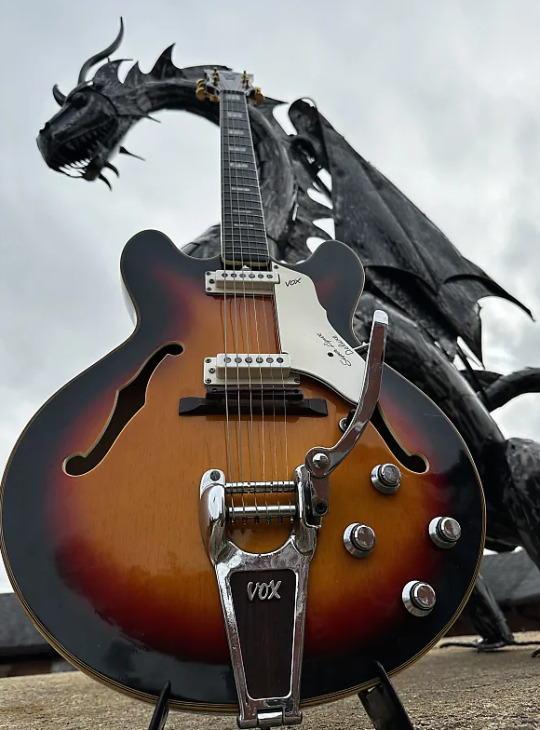
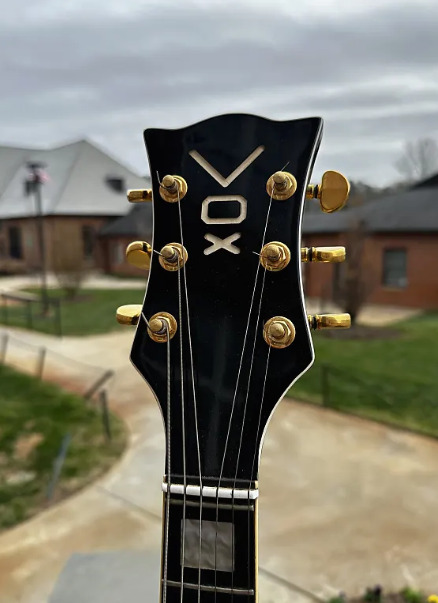
Vox Super Lynx Deluxe 1960’s - Sunburst
30 notes
·
View notes
Photo

1960’s Guild Jumbo F-50 Sunburst Maple and Spruce Top with factory hard shell case. #guildguitars #vintage #beauty (at Guitars United) https://www.instagram.com/p/CnXwV3HO4d6/?igshid=NGJjMDIxMWI=
2 notes
·
View notes
Link
Check out this listing I just added to my Poshmark closet: NEW House of Harlow 1960 Mini Sunburst Necklace, 16" Brand New Gold Blue Green.
0 notes
Text
925 Silver Jewelry: Trends and Influences from Art History
925 silver, or sterling silver, is a beloved material in jewelry making, known for its elegance, versatility, and timeless appeal. Its design trends have been profoundly influenced by various art movements throughout history. Let’s delve into how different art styles have shaped 925 silver jewelry, creating pieces that are both beautiful and historically rich.
Art Nouveau (1890-1910)
Characteristics:
Organic Shapes: Inspired by natural forms like flowers, leaves, and flowing lines.
Whiplash Curves: Asymmetrical shapes and sinuous lines that mimic the movement of nature.
Enamel Work: Vibrant colors and intricate designs achieved through enameling techniques.
Impact on 925 Silver Jewelry:
Art Nouveau's emphasis on natural beauty and fluid lines led to the creation of delicate, intricate silver jewelry. Pieces often featured motifs of plants, insects, and mythical creatures, adorned with colorful enamel and gemstones. These designs celebrated craftsmanship and artistic expression, making each piece unique.
Art Deco (1920-1935)
Characteristics:
Geometric Patterns: Bold, symmetrical designs with a focus on shapes like chevrons, zigzags, and sunbursts.
Luxurious Materials: Use of precious metals and stones to create a sense of opulence.
Streamlined Forms: Sleek and sophisticated aesthetics, emphasizing modernity and progress.
Impact on 925 Silver Jewelry:
Art Deco brought a sense of glamour and sophistication to silver jewelry. The era's geometric patterns and streamlined forms translated into striking silver pieces that often incorporated contrasting gemstones like onyx, coral, and diamonds. These designs exuded elegance and modernity, making them popular among the fashion-forward.
Mid-Century Modern (1940s-1960s)
Characteristics:
Minimalism: Simple, clean lines with an emphasis on function and form.
Organic Influence: Inspiration from natural shapes but with a more abstract and simplified approach.
Innovative Materials: Experimentation with new materials and techniques.
Impact on 925 Silver Jewelry:
The mid-century modern movement brought a minimalist approach to silver jewelry. Designs became more abstract, focusing on the purity of the form rather than intricate details. This era saw the rise of bold, statement pieces that were both artistic and functional, often showcasing innovative craftsmanship.
Contemporary Influences
Characteristics:
Eclectic Mix: A blend of traditional and modern elements, creating unique and personalized pieces.
Sustainability: A growing focus on ethical sourcing and environmentally friendly practices.
Customization: Personalized jewelry that reflects individual style and stories.
Impact on 925 Silver Jewelry:
Contemporary silver jewelry embraces a mix of influences, combining classic techniques with modern aesthetics. There’s a strong emphasis on sustainability, with many jewelers opting for ethically sourced materials. Customization has also become a key trend, allowing individuals to create pieces that reflect their personal narratives and values.
Notable Art Movements and Their Influence on 925 Silver Jewelry
Renaissance (14th-17th Century)
The Renaissance period, known for its revival of classical art and culture, influenced silver jewelry with its intricate designs and elaborate decorations. Pieces from this era often featured motifs inspired by mythology and nature, with a strong emphasis on craftsmanship.
Baroque (17th Century)
Baroque jewelry was characterized by its grandeur and extravagance. Silver pieces from this period often featured intricate engravings, bold shapes, and the use of contrasting materials to create dramatic effects.
Victorian Era (1837-1901)
The Victorian era saw a variety of styles, from the romantic and ornate designs of the early period to the more subdued and geometric patterns of the later years. Silver jewelry often included sentimental motifs like hearts, flowers, and lockets, reflecting the personal and emotional significance of the pieces.
Conclusion
The evolution of 925 silver jewelry is a testament to the enduring appeal and adaptability of this precious metal. From the flowing lines of Art Nouveau to the geometric precision of Art Deco, and the minimalist elegance of mid-century modern, each art movement has left its mark on silver jewelry design. Contemporary trends continue to draw inspiration from these historical influences while embracing sustainability and personalization. Whether you prefer classic or modern styles, 925 silver jewelry offers a rich tapestry of artistic heritage and timeless beauty.
0 notes
Link
Check out this listing I just added to my Poshmark closet: House of Harlow 1960 Sunburst Necklace 18”.
0 notes





